

THE
BABY-LED FEEDING
COOKBOOK
A new healthy way of eating for your
baby that the whole family will love!
![]()
AILEEN COX BLUNDELL
GILL BOOKS

For my beautiful children, Jade, Dylan and Oscar. Thank you all so much for picking me to be your momma. It’s the best privilege in the world and I love you all to the moon and back.
![]()
Cover
Title Page
Note
About the Author
Foreword by Roisin Gowan, Registered Senior Paediatric Dietitian
Introduction
Good Morning, Little Baby
Lunches for Superheroes
Baby-Friendly Family Dinners
Finger Lickin’ Dips & Sauces
Yummy Treats for Little Hands
Yippee! Let’s Have a Party
Acknowledgements
Copyright
About Gill Books
![]()
Information given in this book is not intended to be taken as a replacement for medical advice. Always consult a qualified medical practitioner before introducing food to your baby.
![]()
Aileen Cox Blundell grew up in a little village in Westmeath. She loved to help her mother cook, and it was there, at home, that she developed her passion for healthy, wholesome food.
When her daughter Jade was born in 2002, the only way to get her to eat anything was to place the food in front of her and let her take control and feed herself. Seeing the incredible benefits of allowing her children to experiment with food at an early age led her to create the blog and website Baby-Led Feeding. When she isn’t cooking or developing exciting new recipes, Aileen runs a successful design studio specialising in branding and packaging for various food companies. She lives in Swords with her husband, Conor, and their three foodie children, Jade, Dylan and Oscar.
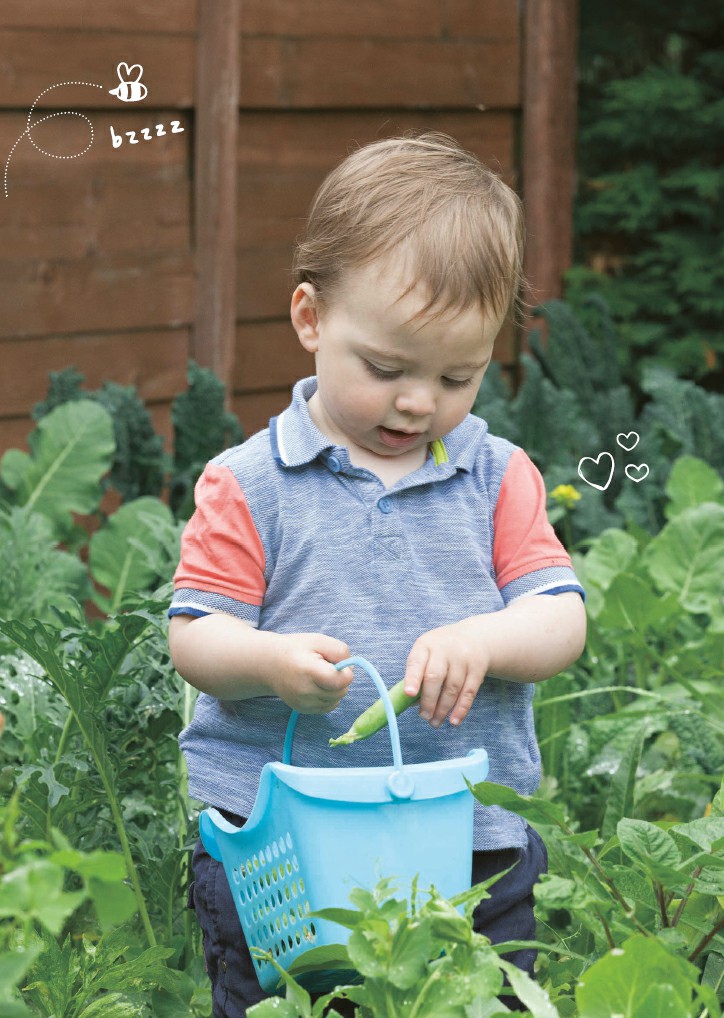
![]()
As a paediatric dietitian, I am dedicated to helping parents make healthy choices for their little ones. From the moment I met Aileen, I was impressed by her passion, enthusiasm and common-sense approach to creating recipes for baby-led feeding.
Baby-led feeding is an exciting way to expose your child to a variety of tastes and textures from the start of their lives, and it can also make mealtimes more fun. It can help improve hand–eye coordination and the development of healthy eating habits as children learn to self-regulate their feeding. Babies can independently pace their eating, satisfy their appetites and meet their individual nutritional requirements. This book is designed with that in mind.
It also provides healthy choices for your little ones. Aileen has created delicious meals and natural treats with less than the recommended sugar intake for each serving. Limiting this type of sugar can reduce the risk of health problems such as childhood obesity and type 2 diabetes.
This book is the product of a lot of hard work, dedication and determination. It is a fantastic guide to teaching your baby to enjoy a variety of tasty foods and drinks, and I would be happy to recommend it to my clients!
I hope you enjoy this book as much as I did.
Roisin Gowan,
Registered Senior Paediatric Dietitian, works in Ireland’s biggest children’s hospital, is registered with CORU and is a member of the INDI
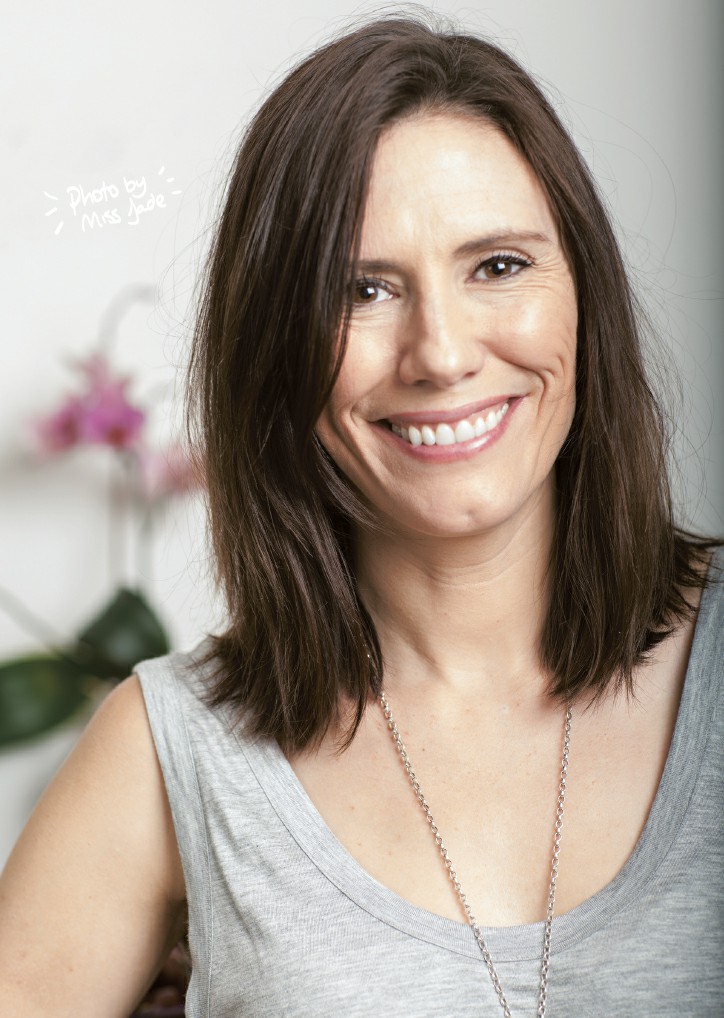
Ever since I was a little girl, I have always had a passion for food, both cooking and eating it. I can vividly remember running home from school to help my mother bake bread or prepare stew for dinner. I think she instinctively knew that getting kids involved in cooking made their love of food even stronger.
I grew up in a little village in Westmeath called Multyfarnham. Imagine lush green fields, farm after farm and lots and lots of lakes. My dad taught me how to fish and each season we would fill the freezer up to the brim with fresh trout and salmon. In the winter months, when the fishing season was over, he hunted for wild pheasant and duck and these were our staple meats for most of my childhood.
As a child, though, I thought we must be very poor to be eating like this and, like most kids, I wanted the things I couldn’t have – white bread, chocolate breakfast cereals and anything besides trout or pheasant for dinner.
In my teenage years, I worked in kitchens as a trainee chef. The hours were long, the work was hard and it just didn’t seem like a job that would make me truly happy in the end. I decided that it wasn’t the life for me and that I would rather keep my love of cooking at home for myself and my friends and family, and instead I pursued a career in graphic design.
My daughter Jade was born in San Francisco when I was twenty-five years old and right from the moment she entered my life I naturally wanted only the best for her. I breastfed her exclusively until she started solids and then began introducing a varied diet of fish, meats, vegetables and fruits – all puréed into the craziest of concoctions. Everything was going great until Jade reached seven months old and decided she no longer wanted me to feed her with a spoon. She would simply turn her head to the side, purse her lips and refuse point blank to let me put any food into her mouth. The only way I could get her to eat anything was to place the food in front of her and let her take control and feed herself.
I was a first-time momma. I was anxious and worried whether she was getting enough food, let alone the nutrients she needed to grow healthy and strong. Baby-led feeding wasn’t even a phrase yet – and wouldn’t be till almost six years later. I didn’t know anyone who had experienced this with their baby and no one had any advice to give me. So I brought her to my paediatrician – she saw the panic-stricken look on my face and instantly put her hand on my shoulder and told me I was to trust my instincts as a mother. She said to remember that milk comes first and that once I gave her healthy, nutritious foods Jade would be fine.
Over the following years Jade showed me how capable she was at demolishing every food I put in front of her. Nothing was off the menu and by the time she was three years old she ate everything from sushi to olives and spicy chicken. It was amazing to all those around us how much of a little foodie she had become.
My son Dylan was born five years later and was a whopping almost-eleven-pound baby boy who just loved food! When it came to weaning, I’m not sure why I didn’t adopt the method I had ended up using with Jade, but again I decided to opt for the more traditional method with him. It seemed like the easiest thing to purée all of his meals and, at the beginning, once there was food he didn’t care how it arrived – until he got his toddler independence.
There was a lot of ‘here comes the train’ and ‘quick before Daddy eats your dinner’, but no amount of pleading would get my two-year-old to eat. In restaurants, my husband and I took it in turns to spoon food into him while the other ate their dinner, so one of us always ate cold food.
As Dylan got older, broccoli became trees, asparagus became giraffe’s legs and spinach was superhero food – all superheros eat spinach! Believe me, when your kid is fussy you’ll do anything to try get them to like more things. Dinners were stressful, trying to get him to eat the meals we had made, and in the end we created the ‘list of five things’. He could pick five things he didn’t like and we wouldn’t put them on his plate. But he was such a clever little thing that he would ask before dinner what we were cooking and the list would change accordingly. So we had to change tactics. Our new solution was to get him to just try everything that was on his plate. One bite. Just one!
To grown-ups this seems really reasonable, but to a young child trying new things is daunting. What if they don’t like it? It looks terrible so it probably tastes like it looks. The breakthrough came one day when we cut up a fresh, ready-to-eat ripe mango. My husband looked at him and asked him to have just a little taste, and he shook his head and said no. It took fifteen minutes of persuasion and tears until, finally, he put half a teaspoon into his mouth. His face suddenly changed from the ‘I’ve just eaten a lemon’ expression to joy and he said, ‘I think my new favourite food is mango!’
This was just what we needed because in the years that followed we were able to use the mango story as leverage to get him to try new foods. He is still the pickiest eater of my three children but usually only about meat and fish these days. I have to give him huge credit for being such a great trier. He may not like everything but he tries and we are happy with that.
My own attitude to food has changed so much over the past ten years. In 2010 I took up running in an aim to get fit and healthy. I didn’t do crazy amounts, just three or four runs a week, but instead of feeling the benefits of getting more exercise I felt worse. I was tired all the time, cranky, constantly getting sick and always feeling run down. I went to the doctor and had some blood tests but nothing seemed to be out of the ordinary. I just seemed to be constantly trying to make myself feel like I had the energy to get through the day. Most days I had chocolate and Coke and that helped – for about an hour; then I went back to feeling like rubbish.
I did eat lots of vegetables and fruit, but it wasn’t until I decided that something had to give and started writing down the foods I ate that I realised how much bad food I was putting into my body. It wasn’t just weekend treats, which is what I had convinced myself I was having: it had become a daily thing.
It just so happened that around this time there seemed to be documentary after documentary on TV on the effects of processed foods and sugar. And it dawned on me, finally, how food really has such an effect on our well-being. There is something so powerful when you understand what food does to your body.
So that was my wake-up call, and I took control of my own health. Back to the basics I went – to fresh, whole foods, natural produce and, most importantly, packaging free (which is also better for the environment). I cooked everything from scratch and prepared wholesome treats made from ingredients I could pronounce. Within a few weeks, my skin had cleared, I slept well and I felt a million times better than I had ever done. I also noticed a huge difference in my children. They ate less sweet foods and way more vegetables, and treats became just what they should be: occasional – much to their dismay at times.
In 2013 I got pregnant with my beautiful Oscar and I felt so empowered by my newfound love of healthy foods that I wanted to pass this love to him. I also wanted to let him feed himself the way Jade had and so I started taking photos of his food adventures. Each week I would photograph him and catalogue the recipes I cooked for him. He was amazing to watch as he shoved pasta with beetroot pesto into his mouth, and baby pizzas and healthy kale muffins. I never gave him alternatives – if he didn’t eat it the first time, I put it back in the fridge and gave it to him when he was hungry and it really worked.
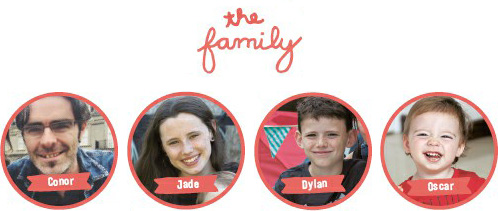
When Oscar was one I showed my lovely mother my collection of photos and recipes and, being the supportive mother she is, she encouraged me not hide them from the world but to use them to help other parents to get their babies to eat in a healthier way, and so the Baby-Led Feeding website was born.
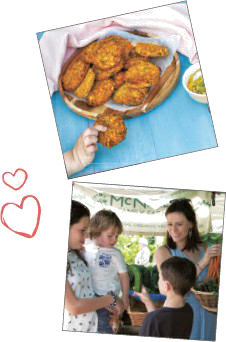
I am overwhelmed by the response from the community of mothers and fathers who follow my blog and cook the food. Every day, families share their stories, make the foods from my recipes and, even better, send me cute photos of their children eating them. It encourages me so much to continue on this journey and to help make life easier for parents. There is enough to do without being tied to the cooker, and I hope this book shows you how easy it is to make healthy, nourishing food for your little ones.
All the recipes are made with your babies in mind. They are refined-sugar free, salt free and use as much fresh fruit and vegetables as I could possibly cram in. I’m really looking forward to your babies growing up with Baby-Led Feeding and I’m really excited to see what you all make.
![]()
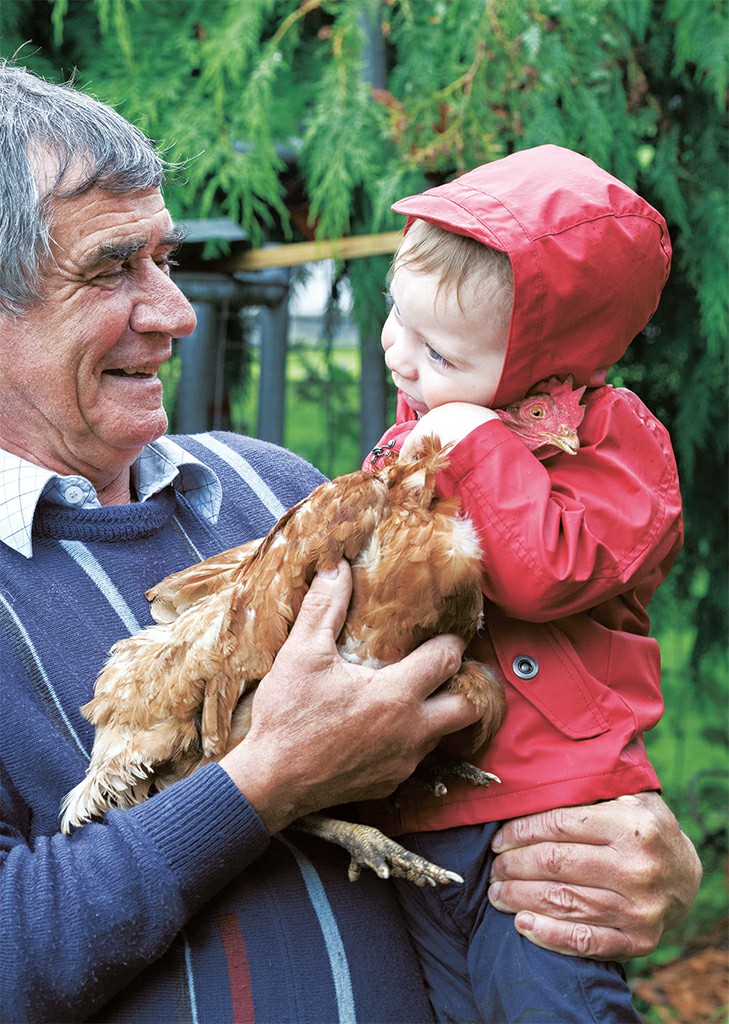
![]()
Baby-led feeding works from the same principles as baby-led weaning. It begins when your little one is around the six-month mark and has started to show signs of being able to pick up food.
You will know when your baby is ready when the piece of toast in your hand is suddenly being stuffed into their little mouth or your stem of broccoli disappears with only remnants left on your little baby’s face.
It is this curiosity and adventure that makes baby-led feeding so special. It’s a natural exploration of everything around them and this is encouraged by giving them wholesome and naturally delicious foods that they will grab, explore and put into their mouths all by themselves.
It is such an enjoyable time for the baby and the entire family. You get to watch this little human being you have brought into the world take complete control over what they eat. You watch them poke holes in muffins, peering in to see what the soft textures contain, and experience that joy of seeing them try a mushroom for the first time and loving it or hating it but knowing they picked up that food all by themselves, put it in their mouth and tried.
The main belief behind baby-led feeding is that all food should be healthy food, and with the growing statistics of obesity in Ireland, it is more important now than ever to make sure we are giving our children the right foods to help nourish them for the long term.
If you only give your baby healthy food then that is what they will grow up knowing – good food is healthy food. It takes a while for your baby to happily munch on a lettuce leaf but you will be astounded when they do so for the first time.
There are no spoons, no choo-choo trains, no ‘Daddy’s gonna eat your dinner’. Your baby gets to choose from here on in. They decide what they want to eat and what they don’t, how much to eat and, more importantly, when they are full. I’m sure we all remember at some stage being told ‘You’re finished your dinner when your plate is empty’? Well, that all goes out the door from here on in.
If a food is soft enough to squish between your finger and thumb then your baby’s gums, even without teeth, are strong enough to break it down. This chewing develops naturally with the new foods you give your little one and also aids in the natural digestion of food.
Your baby will learn to explore and manage different textures and shapes of food from six months old. They will have the opportunity to practise their fine motor skills by grasping and picking up food at every meal.
As your baby tries new foods, they will experience a world of new textures they would probably not have had the opportunity to try if they were traditionally weaned. This is so important because, in the long term, they will be more inclined to pick up and try new foods than ‘taste with their eyes’. Babies who feed themselves are much less likely to be picky eaters – they want to see what this strange new food is that has been placed in front of them. Because your baby has been exposed to a variety of fresh and wholesome foods from the very beginning, they are much more likely to try a little taste of something new.
Your baby eats what you eat. There is no mashing concoctions of foods you probably wouldn’t eat yourself: you simply cook healthy, delicious food for your family and then let your baby get to work on it on their own.
The biggest plus for me is being able to eat my own dinner while my little one munches away on his own food. Because I’m not trying to get him to eat one more bite and he is eating at his own pace, we get to eat dinner as a family and it is so much more fun. Watching a seven-month-old feed himself spaghetti and meatballs while the rest of the family eats them too is what it’s all about.
This is a benefit not only for the child but also for the parents. It means you don’t have to try and think of foods to give your baby while you cook something totally different for the rest of the family. We all eat the same and there are no alternatives.
Many a person has been astounded over the past few years as my child demolishes an entire baby bowl of beetroot pasta. There is so much pleasure in knowing your child loves good food and will at least try everything you put in front of him.
![]()
So your baby has reached six months and is ready to eat solid foods. This is the most exciting time, as you get to watch them explore new textures, tastes and smells.
The great thing about the baby-led way of feeding is that you don’t need much to get started, and even though you might be a bit skeptical that your six-month-old baby will be able to hold and eat an entire spear of avocado, they will amaze you with their talents. There are a few basic principles to follow when starting your baby-led journey.

I use a great one that straps to a normal chair. It was cheap and came with its own tray but can also be used without it, which means the baby can eat at the kitchen table with the rest of the family.

There are many types of long-sleeved bibs out there and they are brilliant. They save on changing clothes after every meal and if you can get one with a catch pocket that’s even better, as it reduces spillages on the floor.
At the same time, food mess from a little baby is fairly easy to clean up, and if your baby has a good plastic bib on then they shouldn’t get that messy. Also, they become really good at eating really quickly. You just have to relax and go with it.
Cut a wipeable tablecloth into quarters and place one clean piece under your baby’s high chair. Any food that falls off can then be picked up and given back to them, which minimises any wastage.

Unless you can find a really good suction bowl your baby is just going to fling it across your kitchen floor. So just place the food onto their high-chair tray and let them get to work.
![]()
I gave my baby a kiddie spoon when he was about seven months old. At the start, he placed the food onto the spoon with one hand; then usually as he placed the spoon into his mouth the food fell off. But he learnt very quickly and by the time he was ten months old he was able to feed himself soup without spilling a drop … well, most of the time.

It is a messy affair watching your baby spoon-feed or fist-feed chia pudding into their mouth, so initially you may need to pre-load a spoon to help them on their way. This simply means you put the food on the spoon and let your baby pick it up and put it in their own mouth. Essentially, you are still not feeding them – they are doing the work. It’s a great way for them to master the art of using cutlery, and before you know it they’ll be drinking soup from a spoon on their own like a pro!
![]()
They will want to use their hands regardless of how messy the food is and will learn about so many textures and tastes.
![]()
Introduce soft foods at the beginning like banana or roasted sweet potato. I also gave my kiddies roasted butternut squash, avocado, steamed carrots, broccoli and scrambled egg. It’s so much fun watching them explore their new food and having that first magical taste.
When you are giving fruits and vegetables on the side, cut them into thick chip sizes. This makes it much easier for small babies to manage, as they get frustrated if the food is too small to pick up. Just remember that all food should break apart when squashed between your thumb and index finger.
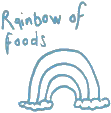
Until babies are six months old, they get all the nutrition they need from either breastmilk or formula. After that, iron-rich and nutritious foods need to be introduced to their diet. According to Bord Bia: ‘The best way to ensure that your child is eating a balanced diet is to offer a wide range of different foods each day.’
Babies get frustrated when they are hungry so space out the milk feeds and solid-food feeds. Believe me, it makes for way more enjoyable meal times for everyone!

It is lovely to eat as a family anyway, but when it comes to letting babies feed themselves, it’s even better. You don’t have to disrupt your own meal by trying to get them to eat. And seeing everyone eating the same foods will encourage your baby to try them too. You simply all eat together and I guarantee that seeing your little one feed themselves will bring a whole new joy to your mealtimes.
![]()
Baby-led feeding has been one of the best and most enjoyable things we have done as a family. It is so much fun watching this little human explore their food and taste new things for the first time. It flies by so take a deep breath and enjoy it. Honestly, the mess gets less and less and before you know it you will have a pro on your hands.
Don’t overload your baby’s plate with too much food. Offer small amounts (one mini-muffin at a time, for example) and then look for their cues to see if they are still hungry.
If they are, give them a little more or mix it up by giving them some softly roasted vegetables on the side or some fruit and natural yogurt.
Remember that babies’ tummies are much smaller than older children’s or grown-ups’ and they don’t need as much food. They also can fill up easily on bread so make sure you are giving them a varied, colourful diet so they grow up healthy and strong for life!
One of the best things about this way of feeding is that your baby will self-regulate. Once they are full they will just stop eating.

If your baby is breastfed then continue to nurse on demand, as your baby gets all the liquid they need from breastmilk.
If you want your little one to start using a sippy cup, you can express a little milk and offer it to them if they are thirsty at mealtimes. As long as your baby is producing regular wet nappies you know they are getting enough liquids.
For babies who are formula fed, you can give them a few sips of cooled boiled water in small amounts, particularly if they are constipated.
Important
Cow’s milk is not suitable as a main drink for babies under the age of 12 months. It is OK to use cow’s milk for cooking.
Babies and toddlers do not need sugary drinks.
Babies and toddlers do not need juice, as it is full of empty calories.
![]()
Getting your children to be foodies takes a lot of patience – a lot! I say this from my own experience. The most important things I’ve learned are:
Your baby may not want to eat their entire dinner simply because they are not hungry, and no pleading will get them to eat more. Just put the food into the fridge and offer it again in a little while. Usually when they are hungry enough it will be demolished.
Even if in the back of your mind you are in anguish about them not eating their broccoli, just act as if you don’t care. Babies are clever little things and play up to reactions you have – all three of my kids did. If they saw me stressed out about carrots, they would refuse to eat them based on that alone!
I have a fussy kid and I know what it’s like to hear him say at dinner, ‘I hate asparagus.’ And Oscar wants to be just like his big bro and copies everything he does. So we had to have words with the older kids before the baby decided that he hated it too – we asked them not to talk about things they didn’t like during meal times, and to just pretend. Now at dinners Dylan can be heard saying, ‘Mmm, I love this amazing asparagus,’ as he winks at me and his dad. Chancer!
I’ve already mentioned some of the benefits of this, but besides all the lovely memories you make, and the fun chats and laughter, eating together sets a great example for your baby’s eating habits. They see what you are eating and want to eat the same thing – or, even funnier, see what their older siblings are eating and want to impress them by eating the same thing.
Refusing to offer alternatives is definitely the hardest thing to do but it really worked for me. Dinner times are often my toddler saying ‘yuk’ to the look of pieces of deliciously roasted chicken and vegetables or just pushing his plate into the middle of the table and breaking into song. He sometimes refuses to eat and then half an hour later is pulling at my skirt, looking for a muffin or cheese on oat crackers. But no, I am a very, very mean momma and I never cave in. It takes strength and lots of will power, but if he doesn’t eat his dinner it goes into the fridge and is offered again when he asks for something else. Usually it only takes a few goes of saying, ‘Oh, I have your dinner right here – would you like it now?’ for him to say yes.